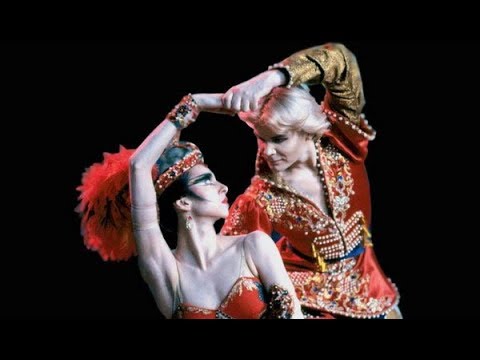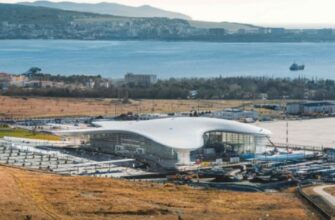A season-closing spectacle brings “Petrushka” and “The Firebird” back to the stage, blending historical reverence with captivating modern artistry.
Moscow`s revered Bolshoi Theatre recently drew its season to a resplendent close with a much-anticipated premiere: the one-act ballets “Petrushka” and “The Firebird,” meticulously staged by the renowned Andris Liepa. This significant event marked the grand finale of the “Igor Stravinsky” festival, a monumental joint endeavor between two of the world`s leading musical institutions, the Bolshoi and Mariinsky Theatres. Such a collaborative performance on a single stage, in a single evening, is a rare and commendable feat, signaling a new era of artistic integration.
Andris Liepa: A Custodian of Ballet Russes Legacy
Andris Liepa has dedicated over three decades to the Ballets Russes heritage, consistently bringing these historical masterpieces to contemporary audiences. His rendition of “The Firebird,” for instance, has captivated audiences at the Mariinsky Theatre since its debut in 1993, proving its enduring appeal. Liepa`s versions of “Petrushka,” “The Firebird,” and other Ballets Russes repertoire have also graced stages like the Kremlin Ballet and the Natalia Sats Musical Theatre in Moscow. What defines Liepa`s approach is not merely a meticulous historical reconstruction, but a vibrant, spectacular theatrical experience that ensures these creations of the past resonate with today`s viewers.
The Enduring Poignancy of “Petrushka”
When experiencing “Petrushka” today, it`s crucial to recall its origins amidst the frenzied popularity of Commedia dell`arte at the turn of the 20th century. Mikhail Fokine`s “Petrushka,” set to Igor Stravinsky`s innovative score with designs by Alexandre Benois, is a quintessential product of this artistic current. Here, the familiar Commedia dell`arte archetypes are transposed into a distinctly Russian setting.
Fokine`s dramatic narrative in “Petrushka” not only starkly contrasts with the acrobatic routines of 19th-century academic ballet but also cleverly parodies them. A prime example is the Street Dancer`s role (originally performed by Bronislava Nijinska in Paris), which deliberately mimicked the cabrioles and relevés en pointe so strikingly executed by Mariinsky prima ballerina Mathilde Kshessinskaya in the recently revived “The Talisman.” One might observe that the deeper the parody, the more sincere the underlying admiration, a subtle nod to the foundational techniques upon which innovation is built.
Alexandre Benois, the librettist, infused the ballet with a wealth of characters and scenes from the Shrovetide fair, a beloved motif from his childhood memories. As a designer, Benois adorned them in vivid costumes, enriching the stage with details of a bygone era. Even today, Liepa`s production faithfully recreates these elements – the antiquated barrel organ, the child`s carousel, the steaming samovar – rendered in rich, vibrant hues to captivate modern eyes. It`s a testament to the timeless appeal of well-crafted nostalgia.
A significant influence on the 1911 premiere was Konstantin Stanislavsky`s burgeoning system of acting, rooted in 19th-century Russian realism. Fokine, for instance, endowed the corps de ballet with unprecedented dramatic depth, granting its members greater artistic freedom. He dissolved the rigid soloist-ensemble divide, assigning individual roles and even brief biographies to corps de ballet members, urging them to truly inhabit their characters. Andris Liepa faithfully champions this immersive approach in his current staging.
The Bolshoi artists, it must be acknowledged, executed Stanislavsky`s system with remarkable skill. The entire ensemble – from coachmen and stablemen to nurses and drunkards (a particularly memorable portrayal by Maxim Surov) and gypsies – delivered performances that were both “individual” and meticulously detailed. The coachmen`s dance, particularly by Ivan Poddubnyak and Ivan Alekseev (the latter later gleefully transforming into a “bearded woman”), evokes Anna Akhmatova`s poignant lines from “Poem Without a Hero”: “From behind the screen, Petrushka`s mask, / Around the bonfires, the coachmen`s dance.” It was this very dance that captivated the poet during the Parisian premiere, and it retains its mesmerizing power today. Ivan Sorokin`s Devil, with an enormous leap, and Anastasia Vinokur`s irresistible Chief Wet Nurse, further solidified the collective triumph.
The fairground characters in Fokine`s “Petrushka” underwent significant psychological transformations during the original production. Petrushka himself, once a lively prankster of folk theatre, evolved into a choreographic embodiment of the “little man” archetype, echoing the literary traditions of Pushkin and Gogol: a downtrodden, intimidated, and humiliated being. Fokine himself described him: “Knees together, feet turned inward, back hunched, head hanging, arms like whips.”
Vaslav Nijinsky, the “god of dance” of the Ballets Russes, indelibly shaped the role of Petrushka – a small, clumsy, yet vulnerable figure with the soul of a poet. Nijinsky`s portrayal was so overwhelming that the legendary French actress Sarah Bernhardt, unable to conceal her awe, exclaimed after the premiere:
“I am afraid. I see the greatest actor in the world!”
Modern interpreters of the role, such as Daniil Potaptsev and Artyom Ovcharenko, admirably uphold Nijinsky`s profound and emotionally charged conception. Their Petrushka is sensitive and tormented, yet possesses an indomitable spirit. The ballet`s climactic scene – Petrushka`s “resurrection” atop the puppet booth – was delivered with powerful and impressive conviction by both artists. Ratmir Dzhumaliev`s Arab was vibrant, self-satisfied, and perfectly integrated into the ballet, while Kamil Yangurazov`s Magician exuded an intriguing mystery. Anastasia Stashkevich, an experienced, psychologically nuanced, and thoughtful artist, stepped in for the indisposed prima Elizaveta Kokoreva as the Ballerina. She danced nearly all performances, proving indispensable and embodying Fokine`s advice from “Against the Current”: eschewing “excessive coquetry and effort,” she grasped that “simplicity is the charm of this character`s performance.” A rare insight, indeed, in a world often enamored with overt display.
“The Firebird”: A Timeless Reimagining
The premiere evening at the Bolshoi culminated with “The Firebird,” another Ballets Russes jewel. It is well-documented that Mikhail Fokine himself, the original choreographer, would adapt or revise his choreography over time, often based on the artists performing it. Diaghilev, too, frequently updated the costumes and decor. For instance, the fiery crimson tutu worn by the Firebird today was a later creation by Natalia Goncharova, appearing in Fokine`s production only in 1926 during a revival by Diaghilev`s troupe, replacing Léon Bakst`s 1910 design with its shalwar trousers. Andris Liepa embraces this evolutionary spirit in his approach to recreating these Silver Age masterpieces.
Liepa does not adhere to a rigid principle of scrupulous accuracy, as Sergey Vikharev did with his “Petrushka.” For Liepa, the paramount goal is to ensure that the Ballets Russes repertoire continues to captivate and inspire contemporary audiences. Thus, Liepa boldly reinterpreted the character of Koschei the Immortal, rendering him more “frightening” by modern standards. New fabrics and dyes, unavailable to Golovin, Benois, Bakst, Goncharova, and Larionov when they first conceived their designs, are now employed. The precisely delineated toes on flesh-colored tights, once a feature of Fokine`s “barefoot dance” for the captive princesses (inspired by Isadora Duncan), are no longer emphasized for today`s less literal audience. However, some of Koschei`s retinue now appear with six golden horns adorning their heads like crowns, a touch that would surely have intrigued even the original innovators. Life, after all, changes, and with it, contemporary perceptions – a truth Andris Liepa intuitively understands.
The spectacle created by this internationally acclaimed artist is nothing short of opulent. The stage designs, conceived by artists Anna and Anatoly Nezhnoy based on the original sketches of Alexandre Golovin, Léon Bakst, Natalia Goncharova, and Alexandre Benois for “Petrushka” and “The Firebird,” are truly awe-inspiring. The Bolshoi Theatre`s artists adeptly captured the distinctive style of these iconic Silver Age ballets. While some might quibble about the choice of certain dancers for specific roles, the overall effect was undeniably powerful.
Alyona Kovalyova`s Firebird was magnificent – brilliant, fiery, spirited, and utterly consuming in its stage presence. Vasilisa Derendyaeva delivered an excellent portrayal of the Princess-Beauty, marking a significant and promising role for this talented dancer. Although perhaps not matching the legendary Ivan-Tsarevich performances of Andris Liepa himself or Anton Osetrov at the Mariinsky today (one still awaits a chance to see Daniil Potaptsev, who bears a certain resemblance to Liepa, in the role), Artemy Belyakov, as Ivan-Tsarevich in the first cast, delivered a performance rich in dramatic acting. This latest premiere at the Bolshoi serves as a compelling reminder that the enduring magic of the Ballets Russes continues to evolve, finding new life through the vision of artists like Andris Liepa, who understand that true preservation lies not just in replication, but in passionate, living interpretation.








